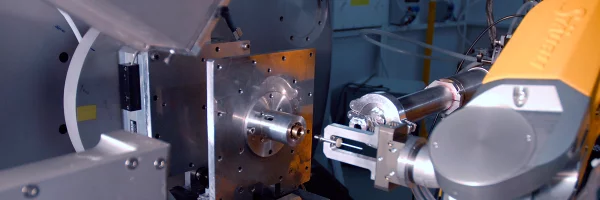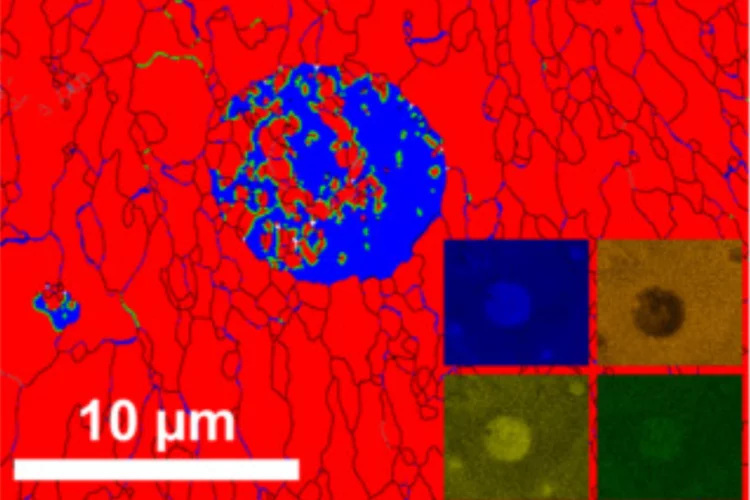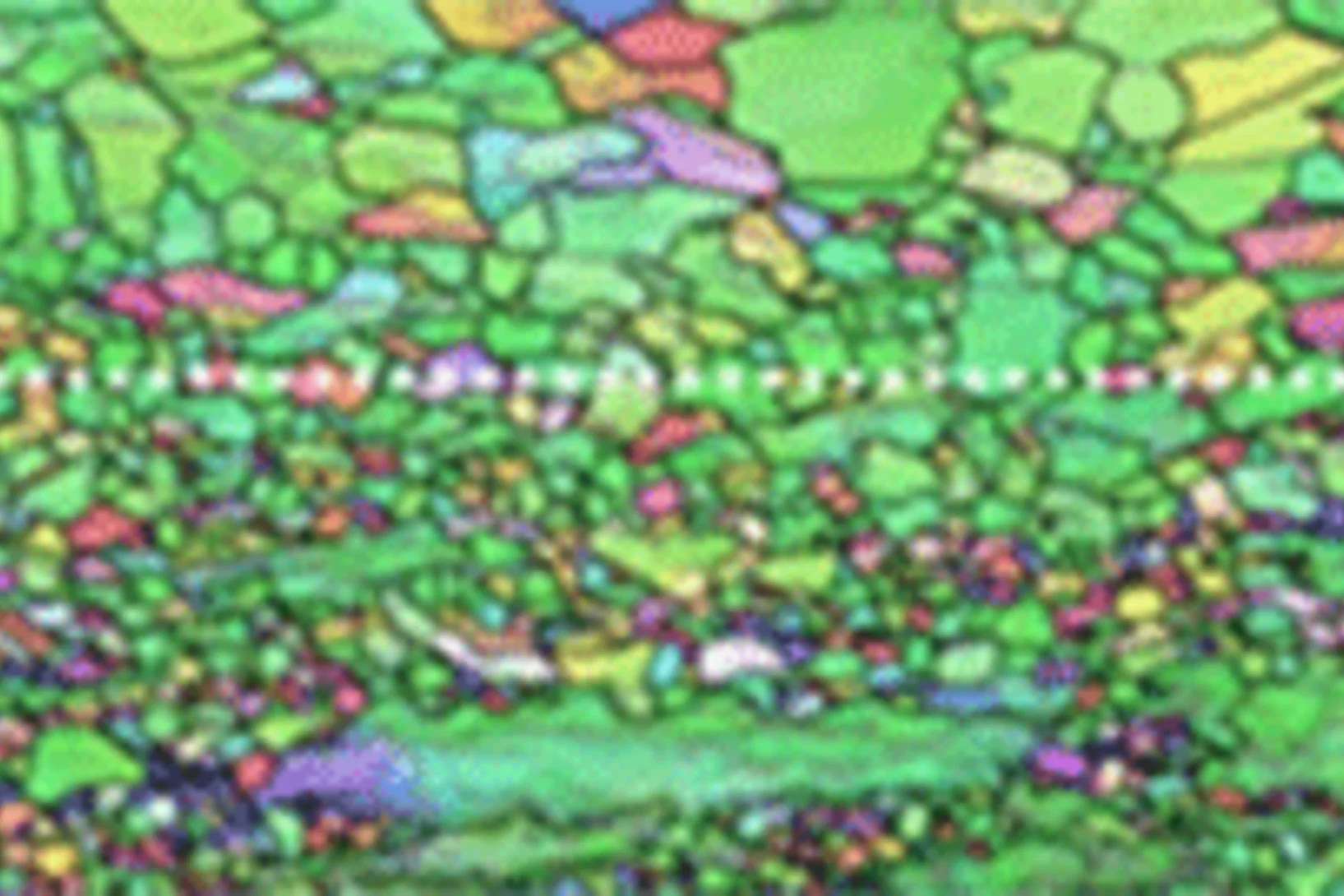SLS 2.0 UPGRADE IS OVER, APPLICATIONS WILL SOON BE POSSIBLE
General description and specifications
The ADDAMS beamline (formerly MS) is powered by a short-period (14 mm) in-vacuum, cryogenically cooled, permanent-magnet undulator, (CPMU, U14), while the front end and optics are designed to optimally exploit the characteristics of the U14 source.
We welcome applications for beamtime as for the normal non PX schedule.
A detailed description of the beamline from the undulator source to the endstations is available in this J. Synch. Rad. paper (open access). Please cite this paper in all publications that include in any part data recorded at the ADDAMS beamline.
The beamline sequentially serves two endstations, described briefly here:
1D - high resolution
The 1D diffractometer, for high resolution diffraction, is located in the first experimental Hutch Experimental Hutch 1 (EH1). Responsible scientists are Nicola Casati and Antonio Cervellino. The Powder diffractometer works in Debye-Scherrer geometry and is equipped with a unique solid-state silicon microstrip detector, called MYTHEN (Microstrip sYstem for Time-rEsolved experimeNts), an outstanding in-house PSI detector group development (Bernd Schmitt, group leader and Anna Bergamaschi, MYTHEN III development).
The MYTHEN III detector is a general-purpose strip detector, with maximum resolution of 3.7 mdeg in 2θ, and very high efficiency and rapid acquisition times, with its simultaneous covering of 120 deg 2θ. This detector is particularly useful when either the scattering power is very low, or the acquisition times must be very short. It is therefore particularly suitable for time-resolved in-situ non-ambient XRPD and applications to the study of radiation sensitive materials, like organic compounds. MYTHEN III is also ideal for Industrial Applications of XRPD, particularly in the field of pharmaceuticals.
Several sample environments are available at the ADDAMS-1D station, controlling sample temperatures from 5 K to 1800 K, under gas and at high pressure, all interfaced with the MYTHEN III acquisition software. For a detailed list see here.
2D - versatile diffraction table
The 2D diffractometer, consisting of a versatile motorized table and a large area detector, the Pilatus 6M, is located in the first experimental Hutch Experimental Hutch 1 (EH1). Responsible scientists are Nicola Casati and Antonio Cervellino. This table can be equipped with various motorized stages and is ideal for single crystal and low particle-statistics powders, as well as for in situ and operando measurements.
High Throughput diffraction can be performed on thousands of different samples, thanks to partnership with Anaxam.
3D - multiple axis diffractometer
The 3D diffractometer is located in Experimental Hutch 2 (EH2). The heart of the station is a large 2+3-circle surface diffractometer from Micro-Controle Newport, with two circles for the sample and three for the detector, plus a hexapod for precise alignment of the sample surface relative to the diffractometer axes. The diffractometer can be operated in two modes, either with a vertical, or a horizontal sample surface orientation.
The detector system is the Eiger 500k novel photon-counting 2-D pixel detector, consisting of 1028 x 512 pixels, each pixel subtending 0.0038o x 0.0038o. A closer 1M Eiger module, with variable distance (50-200 mm) can be placed on demand.
The diffractometer is ideal for surface diffraction and fast powder diffraction, with detection up to 22 kHz speed.
N.Casati - July 2025
Current Highlights and News
Interfacial Phase Formation in 316L–CuCrZr Hybrids
In-situ X-ray diffraction reveals how phase separation and fluid flow shape microstructure in laser-welded multi-material metal builds.
Antiferrodistortive and ferroeletric phase transitions in freestanding films of SrTiO3
Epitaxially grown thin films are commonly used to strain engineer electronic properties by the choice of a substrate, and therefore do not match bulk properties (leading to properties that deviate from the bulk material). Free standing ultrathin oxide films are expected to preserve the bulk-like properties due to the absence of substrate influence. However, we show that this expectation is not fulfilled with ultrathin free standing SrTiO3, as they get ferroelectric at 80K.
Observing laser-induced recrystallization
Synchrotron X-ray diffraction sheds light on laser-induced local recrystallization .




